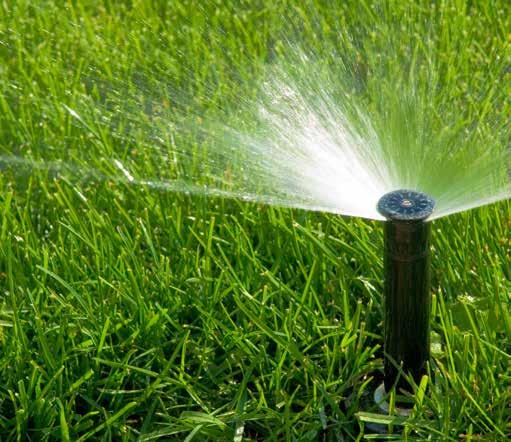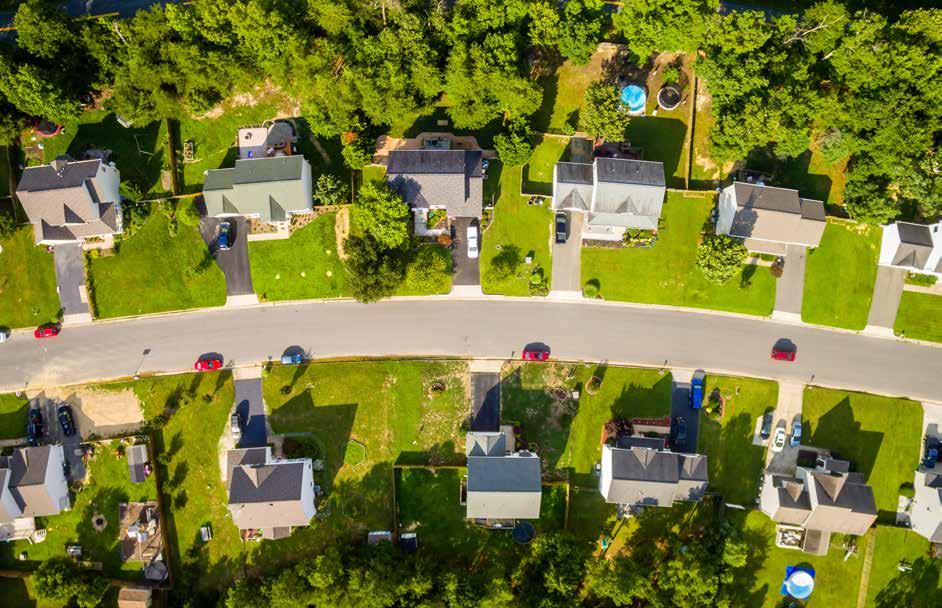
3 minute read
A way to keep yards beautiful
BY THELMA GRIMES TGRIMES@COLORADOCOMMUNITYMEDIA.COM
The days of having Kentucky bluegrass thriving in the front and back yard are over. It’s not because the grass is not pretty, but mostly because it is a total water suck. And when you live in a Western state continuing to deal with the effects of drought – changing the landscape in the yard has become more important than ever.
Jumping into the fray of trying to get more residents to reduce water use in summer, several metro Denver cities, towns and counties along the Front Range are offering incentives, educational programs and more.
In Castle Rock, the town has been pushing water conservation messaging for more than 20 years, but in the last two years, like several communities, they are paying for your grass.
Following a similar program in Aurora, Castle Rock has passed regulations against new homes planting bluegrass at all and pushing more incentive programs to replace existing yards with it.
In exchange for changing out Kentucky bluegrass, Castle Rock residents are being paid a variety of fees and incentives. Castle Rock even hosted a contest last year for those who created beautiful designs without the water-hungry grass helping to suck the county dry.
Rick Schultz, the Castle Rock water efficiency supervisor, said the data doesn’t lie when it comes to the kind of grass people plant and the water required to keep plants alive.
Basing figures on an average resident using 18.69 gallons per square foot of water each season, Schultz said it equates to more than 28,000 gallons of water soaking into the ground in the hot summer months.
To drop those numbers, residents are turning to the ColoradoScape option. ColoradoScape is a natural landscape, comprised of low to very-low water-use-plant material, blending a variety of landscape materials, colors and textures.
When it comes to grass, Schultz said Kentucky bluegrass is a total water suck.
According to the Colorado State University Extension program on gardening, grass varieties like Kentucky bluegrass must receive supplemental irrigation to survive, especially in the hot summer months. Bluegrass lawns can require up to 2.5 inches or more of water per week, according to Extension.
By eliminating bluegrass and decreasing landscape that requires more watering, Schultz said citizens can cut water use in half. A yard using about 30 inches of water per year can easily drop that to 10 by eliminating bluegrass and planting more water-wise plants.

HELPFUL LINKS TO CREATE WATER-WISE GARDENS
Lawn Care • www.bit.ly/3F8CUBO
Xeriscaping: Ground Cover Plants • www.bit.ly/3SX5R9z
Ornamental Grasses • www.bit.ly/3Zzamtc
Xeriscape annuals and perennials • www.bit.ly/3ZTa4Ny
Xeriscape trees and shrubs • www.bit.ly/41ZzYRC
Xeriscape master gardening plans • www.bit.ly/3Zz5hB6
“This is a significant savings, but here’s the other thing – We promote using non-functional turf,” Schultz said. “We are not anti-lawn, but we are saying if you have non-functional turf where the only time you walk on it is to mow it – Why do you need it?”
In an interview with Colorado Community Media in 2022, Mari Johnston, a natural resource extension agent, said native plants create miniature habitats in backyards for birds, insects and pollinators. Planting native species helps native insects because they support each other and the entire ecosystem.
Schultz said when it comes to the front yard, no one really walks on the grass or uses it. Schultz said there are plenty of alternatives to bluegrass to keep a lawn looking great without consuming large amounts of water.

One popular alternative is Colorado prairie grass, which does not require irrigation at all. Last August, Arapahoe County began removing bluegrass in public spaces, adding in prairie grass. The county estimated the change would save 1.5 million gallons of water.
Parker, in Douglas County, is also transitioning away from bluegrass, as the council recently approved a plan to get rid of bluegrass in public parks and open space areas.
The Colorado State University Extension program works to provide local, expert advice on how to go xeriscape, or take a water-saving approach to landscape, in the region.
Xeriscape gardening refers to a type of gardening that requires very little water and maintenance. To effectively xeriscape, residents and businesses are encouraged to conserve water, improve soil, and to focus on turf usage, native plant use, irrigation and maintenance.
According to CSU Extension’s Plant Talk, a good way to reach xeriscape status is to utilize mulch as an alternative to turf, and make good use of planting both perennials and annuals that meet low-water requirements.
Perennials are native to the West and are better known as wildflowers, including penstemons, which produce red, orange, white, blue and lavender flowers.
Annuals include even more variety of water-wise plants, including cosmos, sunflowers, marigolds, zinnias, moss rose, poppy, sweet alyssum and bachelor’s button.
Besides bluegrass, CSU Extension says there are plenty of other turf
Water Requirements For Grass Varieties

KENTUCKY BLUEGRASS — 2.5 inches of water per week
BERMUDAGRASS — 1 - 1.5 inches per week
CENTIPEDE GRASS — 1.5 - 2 inches per week
ZOYSIA GRASS — 1 - 1.5 inches per week
BUFFALO GRASS — 1 - 1.5 inches inches per week
BLUE GRAMA — .5 - .75 inches per week
TALL FESCUE — 1 - 1.5 inches per week
FINE BLADED FESCUE — 1 inch per week
COLORADO PRAIRIE GRASS — 0 inches options, including buffalo grass in outof-the-way areas. Dark green turf like tall fescue that grows deep roots and requires less irrigation is also an option. Getting away from turf altogether, other ColoradoScape options include building beds of bark, stone or gravel mulch. Building a deck or patio in areas where grass used to be can also create a xeriscape yard.

